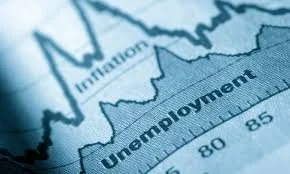Unemployment Reaches Eight-Year High, Leaving 160,000 Kiwis Jobless
New Zealand’s unemployment rate has climbed to its highest level in eight years, with 160,000 people now out of work, according to new data from Stats NZ.
The Household Labour Force Survey shows unemployment rose to 5.3% in the September 2025 quarter, up slightly from 5.2% in June — marking the highest rate since 2016.
While the numbers are concerning, economists say the overall picture hints at early signs of stabilisation after a prolonged economic slowdown.
Economists See “Signs of Stabilisation”
ASB senior economist Mark Smith said the data suggests the labour market is bottoming out.
“Labour market conditions look to be stabilising,” he said. “The worst is behind us, but we don’t expect to see a meaningful lift in employment until 2026.”
He pointed to rising full-time employment and “chunky increases” in hours worked as signs that demand for labour is beginning to strengthen.
Westpac senior economist Michael Gordon agreed, noting the 0.9% increase in hours worked — the first quarterly rise since December 2023 — indicates that employers are starting to restore working hours rather than cutting staff.
“Average hours worked had fallen markedly over the last year, implying that employers were adjusting to the soft economy by reducing hours rather than laying off workers,” Gordon said. “The latest result suggests that trend is reversing.”
He added that the data aligns closely with the Reserve Bank’s forecasts, giving policymakers confidence that inflation will continue easing toward the 2% target midpoint next year.
“We continue to expect a 25 basis point rate cut in November,” he said.
Youth Unemployment Jumps Sharply
The biggest blow has fallen on young workers. The unemployment rate among 15–24-year-olds jumped to 15.2%, up from 13.1% a year ago.
The share of young people not in employment, education, or training (NEET) rose to 13.8%, up 1.4 percentage points year-on-year.
Stats NZ said the NEET rate provides a deeper look at how engaged young people are in the labour market — and the latest figures show many are struggling to find their footing.
Underemployment and Gender Divide
The underutilisation rate, which measures unemployed, underemployed, and potential workers, rose slightly to 12.9%.
There were 138,000 underemployed people — those who work part-time but want more hours — up from 121,000 a year earlier. Around two-thirds were women, reflecting the higher share of women in part-time work.
However, men working part-time were more likely to be underemployed, with roughly one in four seeking more hours compared with one in five women.
Employment Still Strong, Recovery Expected
The employment rate edged down to 66.6%, with 2.87 million people employed — down slightly from 2.89 million a year ago.
Despite the slowdown, ASB’s Smith remains optimistic:
“Better signs are ahead. The unfolding economic recovery should see excess labour capacity gradually erode, with the unemployment rate moving towards the 4% to 4.5% Goldilocks zone by the end of next year.”

